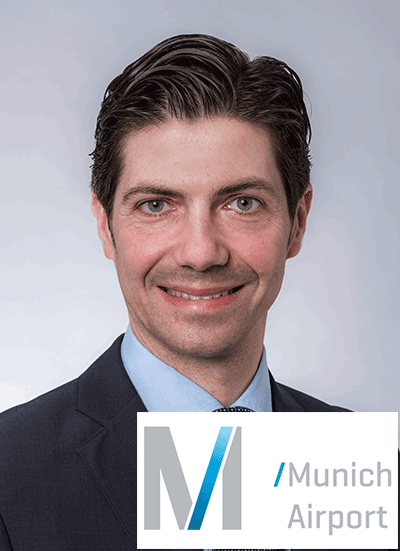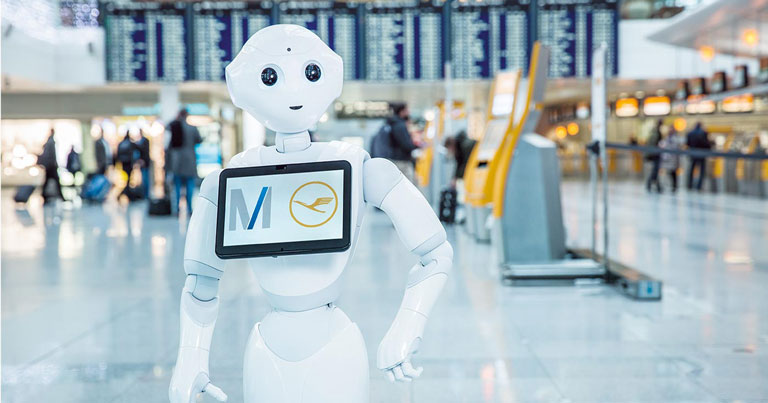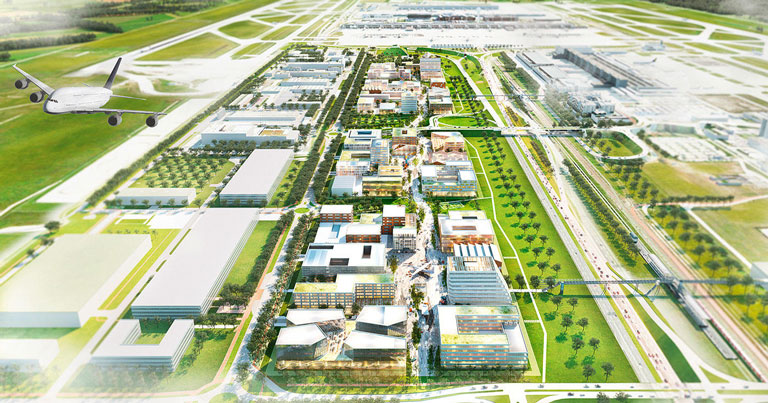
In the constantly evolving world of the air transport industry, Munich Airport seems to have a clear strategy and a roadmap for its digital transformation to enhance operational efficiency and passenger experience. Over the past few years, the airport launched an array of projects, which secure its positions as a global leader, including the AI-powered humanoid robot Josie Pepper, and the recently launched future-focused innovation project LabCampus.
FTE spoke to Arturo Garcia-Alonso, Airport Operations Expert, ahead of his participation in the Future Airports and Baggage Summit taking place at FTE Europe & Ancillary in Dublin between 6-8 June.
FTE: I understand that you are taking part in the Third Working Session: Realising Future Airport visions during FTE Europe & Ancillary 2018. What will be the main points that you will touch on in your presentation on the future of the airport?
Arturo Garcia-Alonso: The main points I would like to discuss during that session revolve around the unique opportunities for the aviation industry to become key players in the development of future multimodal transportation concepts. This includes integrating air taxis in existing airport infrastructure; the development of infrastructure to support electric vehicles and sustainable ground transportation concepts; and last but not least, the mass adoption of mobility as a service. The travelling public from each airport’s catchment areas will have very soon a growing number of multimodal transportation opportunities, including air taxis among others. Defining robust implementation strategies and leading its adoption will be a key success factor for airport operators worldwide in the coming years.
FTE: What do you believe will be the main technologies that we will see being incorporated more and more in the airport of the future? And why?
Garcia-Alonso: The potential of artificial intelligence (AI) as a key tool for both operational efficiency and customer experience is very appealing, and the aviation industry is already striving to unleash its potential. This is closely related to the growing interest in autonomous vehicles, fleet management, automated baggage handling and augmented reality concepts applied to command and control. In addition, sustainability will become more and more a key driver, and we will see airports aiming to reach 100% use of electric vehicles for operational purposes. This will bring additional challenges related to battery management and charging port infrastructure. Last but not least, the use of blockchain technologies for several transactions will become common practice, sooner rather than later.
FTE: What are the benefits of the IoT Airport and what are the challenges of making it a reality?
Garcia-Alonso: The key benefits revolve around automated, real-time information exchange, the accuracy and reliability of the data, the enhanced situational awareness of assets, and operational cost reductions. The biggest challenges for its adoption are closely related with information security. The aviation industry will continue being a key target for illicit activities and interference with the confidentiality, integrity and availability of information services. Balancing the great potential of ubiquitous data connectivity from assets with enhanced resilience and protection against security breaches will be one of the key implementation challenges.

FTE: I understand that Munich Airport is working on “redefining the travel experience” as part of its Strategy 2025. In what ways do you strive to achieve this?
Garcia-Alonso: Munich Airport strives to exceed expectations by facilitating the end-to-end passenger journey and redefining the travel experience. Over the last years, in a combined effort with our group companies, partners and stakeholders, we have implemented digital indoor navigation services; virtual information agents; arrival groceries service delivery; an onsite beer brewery; a visitors park including an aviation multimedia exhibit; our AI-powered humanoid robot Josie Pepper; and numerous activities and events at Munich Airport Centre. It is important to mention that many of these initiatives are available not only for the travelling public, but also for staff members and the communities surrounding the airport. In a way, our strategy aims to redefine the airport experience: our vision is to make the airport a place for everyone to enjoy.
FTE: Can you please share some of your latest projects that you are currently working on as part of the Strategy 2025?
Garcia-Alonso: We have recently launched LabCampus, which is an interdisciplinary innovation centre on our airport campus. Our LabCampus vision is to foster cooperation between companies and industries by bringing together leading experts, companies – from start-ups to global players, creative minds and investors – at the heart of a thriving transportation hub with links to over 260 destinations worldwide and plenty of room for real estate development. We believe the LabCampus will be the perfect platform for future cooperation in aviation innovation.

FTE: Which technologies are currently on top of your agenda for 2018?
Garcia-Alonso: As part of our local and international projects, one of the current technologies that is experiencing tremendous growth and adoption over the last couple of years is biometrics, its application to identity management and its integration in the air travel processes, for both customers and staff. The supporting technologies are mature enough and we believe the security and operational efficiency gains are very promising. However, the industry would need further regulatory standardisation and harmonisation in order to break some barriers around privacy and data security. In order to make that happen, we are supporting initiatives from ICAO, ACI and IATA, and to implement concepts such as “TRIP”, “ACRIS – Seamless Travel”, “One ID”, and “NEXTT”.
FTE: Looking ahead, what are your main priorities for this year and ahead?
Garcia-Alonso: Looking at my own department, we are focusing on a sustained growth of the international activities of Munich Airport. To make it happen, we are leveraging our innovation and operational efficiency strategies on our way to providing additional opportunities for partnership and continuous improvement worldwide. We believe we can help the airport industry achieve a user-centred, seamless and sustainable airport experience, not only at our home airport, but also across the globe. We are working hard to develop, deliver and maintain a set of business processes, services, products, guidelines, best practices, and internal capabilities in order to support our partners in their journey to excellence in airport operations and management.
Arturo Garcia-Alonso, Airport Operations Expert, Munich Airport, will speak in the FTE Future Airports & Baggage Summit at FTE Europe, 6-8 June. Online registration is open until 1 June and it is free for airlines and discounted for airports.






